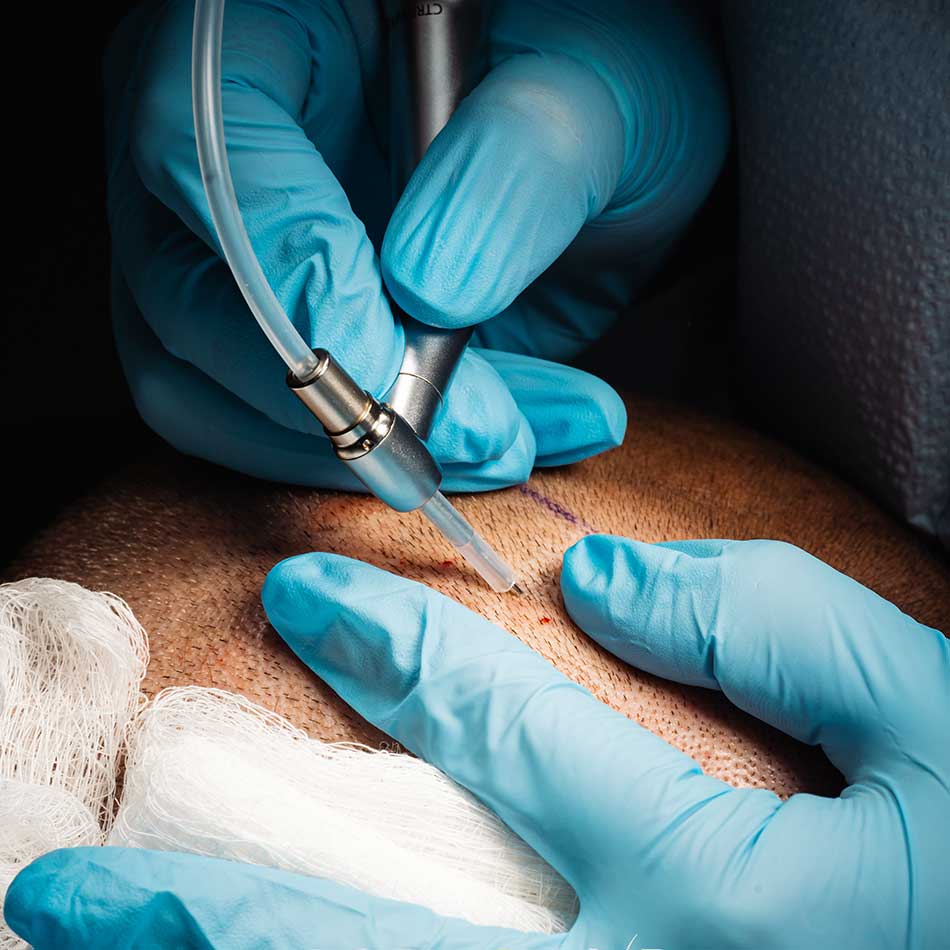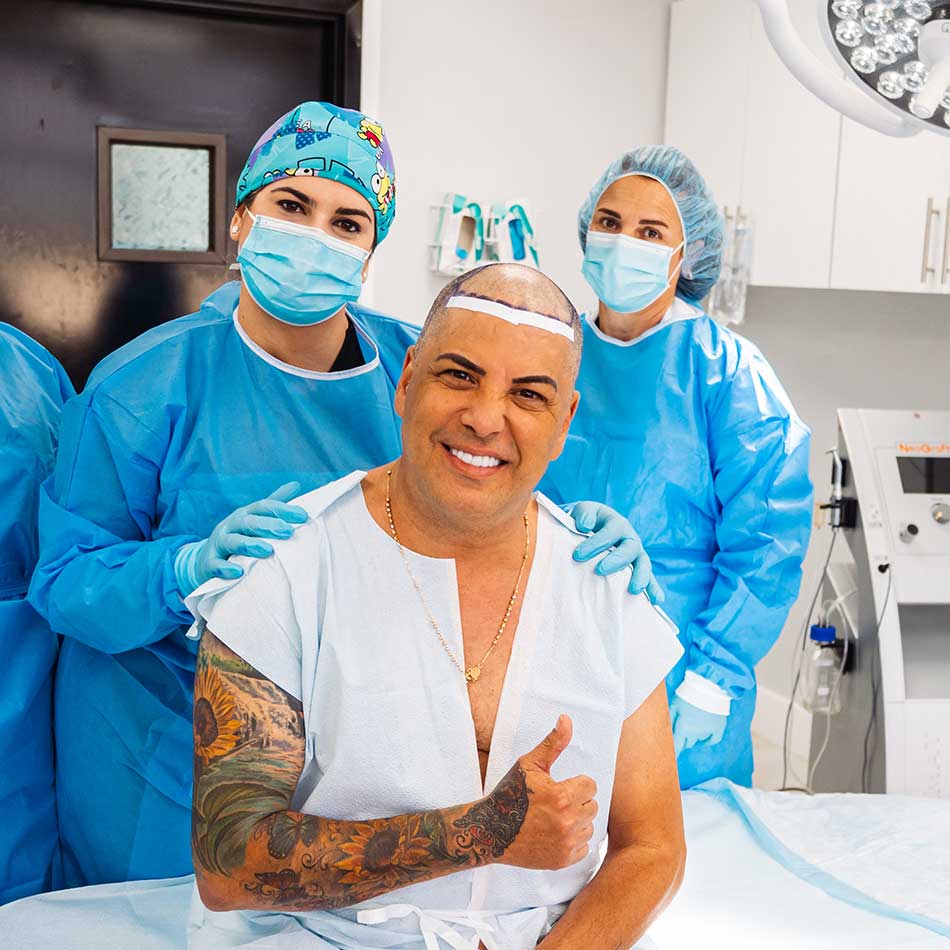
The greatest myth surrounding hair transplants is that they only work for men. Care4Hair specializes in reviving the confidence of women suffering hair loss with hair transplantation. Women from Miami and worldwide trust our team of hair specialists to restore their hairlines, eyebrows, and more! Whether your hair loss is significant or you seek to make a minor cosmetic change, Care4Hair is experienced and equipped to walk you through your beauty journey. Our clinic successfully improves forehead shapes, lowers hairlines, covers bald spots, hides facelift or brow lift scars, and fills eyebrows in just one hair transplant session. A female hair transplant procedure is minimally invasive, requires almost no downtime, and produces permanent results for an everlasting youthful look.


Care4Hair offers women various hair restoration options. Not only can our female patients undergo a standard scalp hair transplant, but the doctor can graft hair for minor cosmetic purposes. Women trust our team of Miami hair specialists to change their forehead shapes, lower their hairlines, hide facelift or brow lift scars, and reshape their eyebrows.
hair in tight hairdos will notice their hairlines receding over time. This hair loss causes the forehead to appear larger, uneven, and unnatural. Female patients who want a more youthful and balanced hairline or just a slight change in its overall shape can achieve the results they want at Care4Hair.


Are you considering a hair transplant but still hesitating to take the next step? Dr. Golio will answer the most common questions about the typical hair transplant procedure in these videos.
FAQs with Dr Golio
Care4Hair performs hair transplants using Follicular Unit Extraction (FUE). This method involves extracting individual hair follicles from donor areas and implanting them into the thinning recipient areas.





A woman must have enough donor hair in the back and sides of her head to fill the balding parts of her scalp or eyebrows. Therefore, patients with Diffuse Unpatterned Alopecia are not ideal candidates for a hair transplant since they usually do not have enough donor follicles to harvest. Care4hair also recommends that patients be a minimum of 25 years old, ideally between 30 and 50, which is when hair loss begins to stabilize.
Other excellent candidates for a female hair transplant include:

Hair transplantation methods are the same for both men and women. However, female hair transplants require the skill of an experienced surgeon that understands how the hairline should frame the female face. Women’s hairlines are naturally positioned lower than men’s and must be fashioned to appear either rounder, more oval, or rectangular with softened corners. The doctor takes a woman’s face shape and proportions into account when designing a new hairline to ensure the most natural-looking results.


The hair transplant recovery time varies depending on the chosen method and the body area being treated. Recovery from an FUE hair transplant procedure is reasonably short, as this technique does not require surgical incisions or stitching. Some patients return to work that same day while others take a day or two, or even an entire week off to focus on aftercare. The recovery process should not take longer than 7-10 days. However, it may take up to one year to see full, permanent results.
It is important to note that transplanted hair will go through a resting phase called “shock loss,” where the body sheds a few weeks after the procedure. While some patients do not experience this, most patients will as it is their body’s natural response to the surgery. Rest assured, even though the hair falls, the grafts remain healthy under the skin and will grow back in the months to follow if all aftercare instructions are heeded.
TCare4Hair’s cost-per-graft is competitively priced at $2.00 to $3.50USD per graft. Patients of any gender can expect to pay anywhere between $6.00 to $10.00USD per graft for a hair transplant in the United States. Contact Care4Hair in Miami to receive a free, private consultation and personalized quote today!
(305) 262-6070
Care4Hair recommends our patients wait at least 4-6 weeks after their hair transplant surgery before dyeing their hair. Allowing the scalp time to recover after surgery will procure the best results.
Hair transplant methods and technologies are the same for both men and women. At your initial consultation, the doctor will recommend the best procedure for your specific hair loss type, medical history, and aesthetic goals.
Care4Hair administers a local anesthetic so your hair transplant procedure will not be painful.
Yes. As with any surgical procedure, there will always be a risk of complications when undergoing a hair transplant. While these risks vary depending on the type of transplant you elect and your medical history, general risks include:
Any questions or concerns you may have must be discussed exclusively with the doctor at your first evaluation, as this is not an extensive list of potential complications. He will provide individualized care and recommendations based on your medical history.
Shock loss is a common reaction where the body sheds hair as a response to the trauma of the surgery. While it can be concerning to see your hair fall after undergoing a transplant intended to grow your hair, this reaction is perfectly normal. The follicles remain intact, and new, healthy hair will grow 2-3 months following your transplant.
Absolutely! We suggest waiting until after your post-partum hormones regulate and your hair loss stabilizes to determine the scope of work more accurately.
Healthy hairs will begin to form after the shock loss phase that takes place 1 to 5 weeks following your hair transplant. Hair will grow back steadily in the next 3 to 4 months, and final results will appear one year to 18 months post-procedure.
A hair transplant can significantly improve postmenopausal hair loss as long as the patient has sufficient donor hair.
Hair grows and sheds in three cycles: